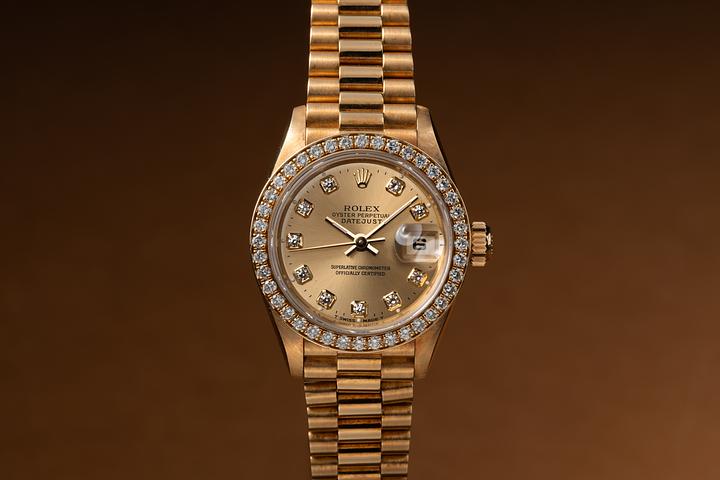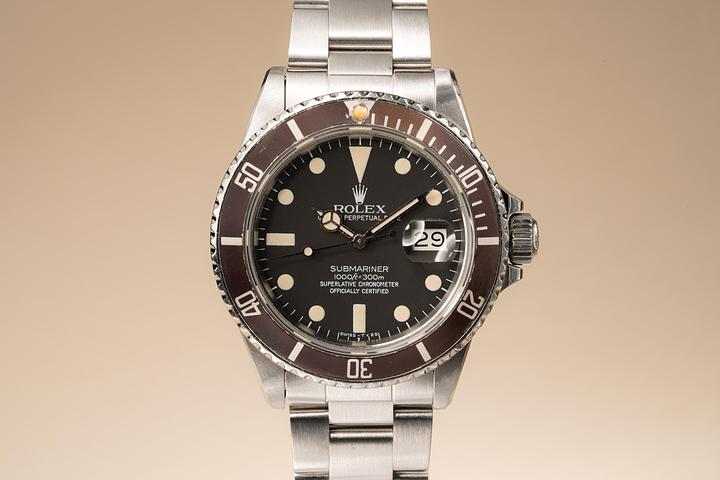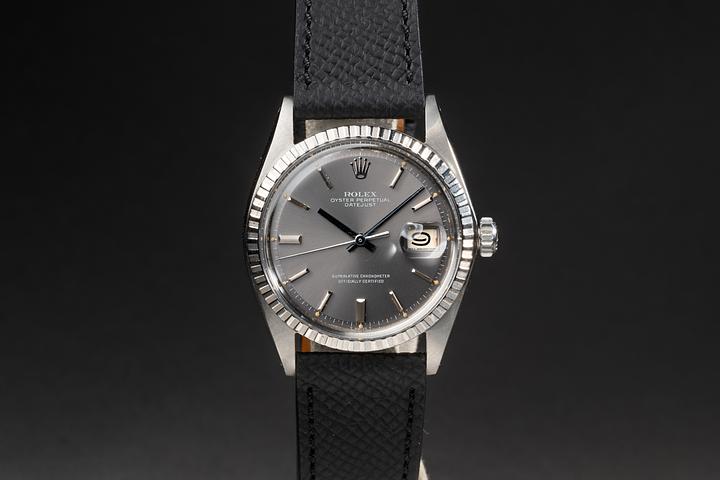Rolex Oysterquartz Day-Date: Bold Design Meets Quartz Legacy
.jpeg)
The Iconic Rolex Oysterquartz Day-Date: A Revolutionary Chapter in Swiss Watchmaking
Somewhere between the mechanical legacy Rolex is famed for and the bold leap into the quartz revolution, stands a timepiece that quietly disrupted tradition while still honoring it—the Rolex Oysterquartz Day-Date. It’s not just a watch with a ticking quartz heart. It’s a Rolex that dared to be different during a time when the industry was fighting against the very technology it embraced here. The 1970s and 80s were chaotic for Swiss watchmakers, with quartz movements bulldozing their way in from Japan. And Rolex—oh, Rolex—did what Rolex does best: it took its time, did it on its own terms, and created something remarkable.
Swiss Precision Meets Quartz Revolution: The Birth of the Rolex Oysterquartz
The quartz crisis was an existential one for Swiss horology. As Japanese brands like Seiko were flooding the market with affordable, hyper-accurate quartz watches, established Swiss maisons found themselves caught between tradition and innovation. Rolex didn’t jump on the quartz bandwagon immediately. No frantic pivots. Instead, they participated in the development of the Beta 21 through the Centre Electronique Horloger (CEH), a Swiss consortium. But for Rolex, that wasn’t enough. The company wanted something distinct, in-house, and unmistakably Rolex. That led to the meticulous development of the Oysterquartz movement, specifically caliber 5055 for the Day-Date variant. Introduced in 1977, the Rolex Oysterquartz Day-Date became a symbol of Swiss defiance and ingenuity wrapped in an angular, modern design.
An In-House Movement with an Outsider's Attitude
This wasn’t just another quartz ticker. Caliber 5055 was tailor-engineered. Hand-finished, chronometer-certified, and constructed with the kind of robustness Rolex is revered for. It featured 11 jewels (yes, even in a quartz!), bridge construction akin to mechanical movements, and a thermocompensated quartz oscillator to counteract temperature shifts—because accuracy mattered. Lot of people don’t realize just how advanced the movement was for its time. Most quartz watches ran cheap circuits with disposable designs. Oysterquartz didn't believe in disposable. Instead, it carried the gravitas of a Rolex. Oh, and the Day-Date complication brought unparalleled daily luxury—automatically updating both the date and day of the week at midnight, with a level of elegance you’d expect only from mechanical marvels. But this was powered by a battery—and some serious Rolex engineering muscle.
The Case Architecture: 1970s Modernism in Steel and Gold
The most immediate visual departure from Rolex tradition was the Oysterquartz case. Sharp, geometric lines. Integrated bracelet. Angular, almost brutalist design language that screamed forward-thinking. Was it inspired by Gerald Genta’s sports-luxe revolution? Possibly. But it had enough DNA to stand on its own. The Day-Date Oysterquartz didn't just play with design—it redefined it. Available in solid 18k yellow gold or white gold (no two-tone, no stainless steel), Rolex made it clear: this wasn’t just a tech-forward gadget; it was a luxury statement. It wore differently, too. At 36mm, technically the same size as the mechanical President Day-Date, the sharp lugs and bracelet integration made it feel chunkier on the wrist. In a good way. Certainly distinct.
A Short-Lived Legend: Limited Production, Lasting Legacy
Here’s the twist. Despite its advancements and daring design, the Oysterquartz enjoyed a surprisingly limited production run. Estimates suggest fewer than 25,000 Day-Date models were made during its lifespan—from 1977 to around 2003. That's astonishing. In Rolex terms? Practically rare. The brand quietly phased it out without fanfare as mechanical movements resurged in popularity. No grand send-offs. No commemorative editions. It came, conquered its niche, and exited with the sort of humility Rolex seldom practices. But that scarcity has only bolstered its cult status today. Collectors are starting to truly wake up to the uniqueness of the Oysterquartz Day-Date. And for good reason. It’s one of the few quartz watches in history that commands respect not just for its practicality—but for its soul.
The Oysterquartz Today: Bold Collector Piece or Quiet Icon?
In the world of vintage Rolex collecting, mechanical is still king, yes. But the Oysterquartz is carving its own path. It’s not a watch you’ll find in everyone's collection, which—if we’re being honest—is part of the allure. Prices have seen steady appreciation in recent years, especially for well-preserved yellow gold Reference 19018s and the rarer white gold 19019s. The sharply faceted case and bracelet are very 70s, but there’s something timeless about how it all hangs together. It’s also weirdly versatile—it can do boardroom, do casual, and definitely flex in social settings without shouting. It ticks, yes audibly so (that iconic quartz tick). But that’s part of the charm. Anyone in-the-know knows what that tick means. It means you’ve got a Rolex that chose to do quartz the Rolex way. Properly. Deliberately. And with authority.
Final Thoughts: The Last Luxury Quartz That Truly Mattered
The Rolex Oysterquartz Day-Date stands as a testament to what happens when the world’s most respected watchmaker decides to do something radical. It's ultra-precise, beautifully over-engineered, proudly modern (for its time), and entirely unapologetic. Its story is one of confident innovation during an uncertain era. It didn’t try to be everything to everyone. And maybe that’s why it resonates now more than ever. In a marketplace flooded with homogeneity, the Oysterquartz Day-Date offers a reminder: Rolex doesn’t just follow time—it redefines it. Even when it's battery-powered. And for those scanning back into horological history looking for the moment quartz went luxe, daring, and disruptive—this is that moment. And it came with a crown.




